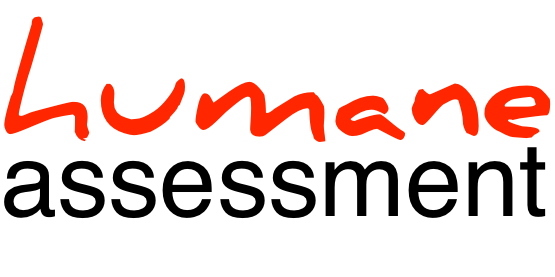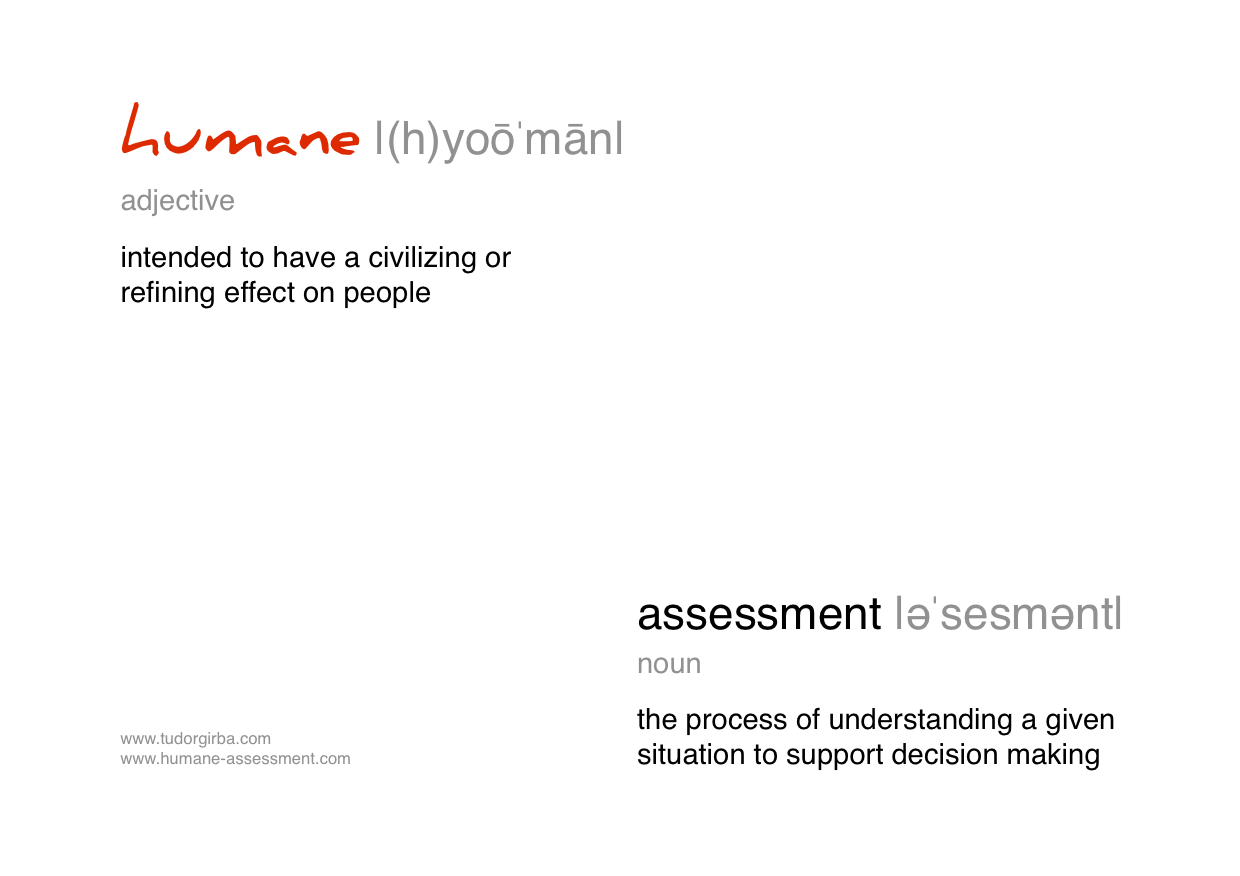The humane in humane assessment
Why humane?
The idea of using humane as an attribute for assessment was inspired by The Humane Interface book authored by Jeff Raskin. Ever since I read the book I got fascinated by how simple things can be when the right problem is formulated the right way.
There are several things that I learnt from this book, and there are also several things that I disagreed with. But, what stuck with me was the humane point of view emphasized so simply in the title. Here is the quote that summarizes it:
An interface is humane if it is responsive to human needs and considerate of human frailties. {{{
Jeff Raskin</blockquote>}}}The author talks about our human nature and how it is this nature that we should focus on when designing user interfaces. It is a manifesto for the original idea of design: make it for humans if humans are intended to use it. Hence humane.
This idea is so basic that it is striking to see it in a title. Even if "humane" should be the focus of almost any design, we still often need to remind ourselves of it and rethink our designs.
Software assessment requires a redesign, too. We have to make it explicit and focus it on the main actors: we, the humans. On the one hand, we need to understand that to be able to make good decisions we require accurate and up-to-date information about the system's reality. On the other hand, we have to accept that we cannot get this information manually. We have to use custom tools that help us. Thus, we need an approach that combines tool building with decision making.
In other words, we need a method that both is responsive to human needs and considerate of human frailties. Hence humane.

